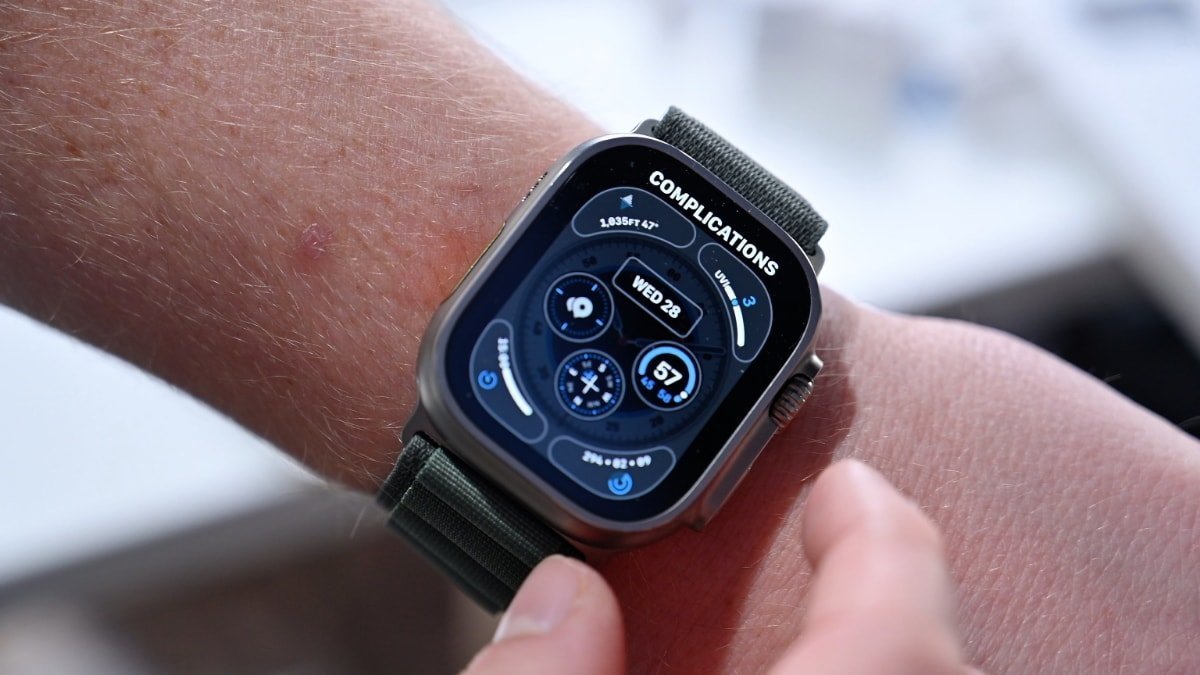
Apple has an ambitious project dating back to the Steve Jobs era: non-invasive continuous blood glucose monitoring.
The goal of this secret experiment, called the E5, is to measure the amount of glucose in someone’s blood without having to pierce their skin.
After recently achieving important milestones, the company now believes it may eventually bring such glucose monitoring to market, according to people familiar with the effort.
Such a breakthrough would be a boon for diabetics. Adding a monitoring system to the Apple Watch would make the device a desirable item for millions of diabetics around the world.
Apple uses a chip technology known as silicon photonics and a measurement process called optical absorption spectroscopy. The system uses lasers to emit light of a specific wavelength into an area under the skin where there is interstitial fluid — substances flowing from capillaries — that can be absorbed by glucose.
The light is reflected back to the sensor in such a way that it indicates the glucose concentration. The algorithm then determines the level of glucose in the person’s blood.
Hundreds of engineers are working on the project as part of the Apple Exploratory Design Group, or XDG, a previously unreported initiative related to X, Alphabet’s dominant division.
It involves even fewer people than the development of unmanned cars, overseen by the Special Projects Group, or the mixed reality headset that the technology development group is developing.
Meanwhile, a spokesman for medical device company Abbott said the company is also developing new products to monitor glucose levels. “Continuous innovation in medical technology is critical,” Abbott spokesman Scott Stoffel said. “It’s also complex and needs to be accurate, simple and affordable. Our FreeStyle Libre products meet those needs.”
Apple has tested its glucose technology on hundreds of people over the past decade. In human trials, the system has been used with people who don’t know if they have diabetes, as well as people with prediabetes and type 2 diabetes .
He compared his own technology with standard blood tests taken from a vein and samples taken from a skin puncture, known as capillary blood.
Apple’s system, which took more than 12 years to develop, is now considered to be in the proof-of-concept stage. The company believes the technology is viable, but it needs to be scaled down to a more practical size.
Engineers are working on a prototype iPhone-sized device that could be strapped to a person’s bicep. That would be a significant reduction from an earlier version of the system that stood on a desk.
One of Apple’s goals for this technology is to create a preventive measure that alerts people to a pre-diabetic condition. They could then make lifestyle changes to try to avoid developing type 2 diabetes, which occurs when a person’s body doesn’t use insulin properly.
Apple’s regulatory group has already held early discussions about getting government approval for the system.
Numerous startups and some of the world’s largest companies have tried to develop a non-invasive monitoring system, but have failed. Others are still in the testing phase; the GlucoRX multisensor noninvasive continuous glucose monitor using radiofrequency was unveiled at Medica in November 2022.
Apple’s top executives believe that this problem is one they are uniquely positioned to handle, given the company’s expertise in hardware and software integration, as well as its deep pockets.
The Apple Watch has gradually evolved into a health tool. The first model, released in 2015, included a heart rate sensor, but was more focused on tracking physical activity. The device gained the ability to take electrocardiograms or ECGs from the wrist in 2018.
It can now also measure body temperature – to track women’s health – and calculate blood oxygen levels.


